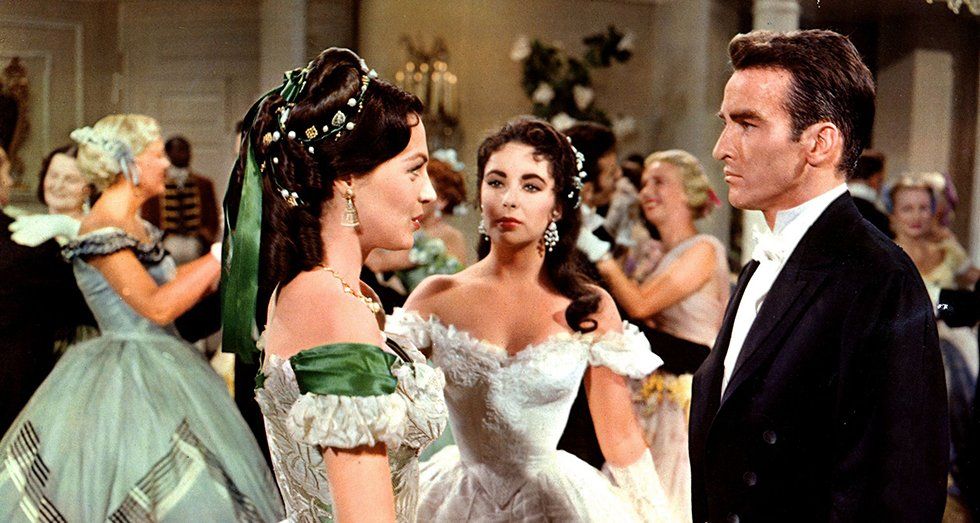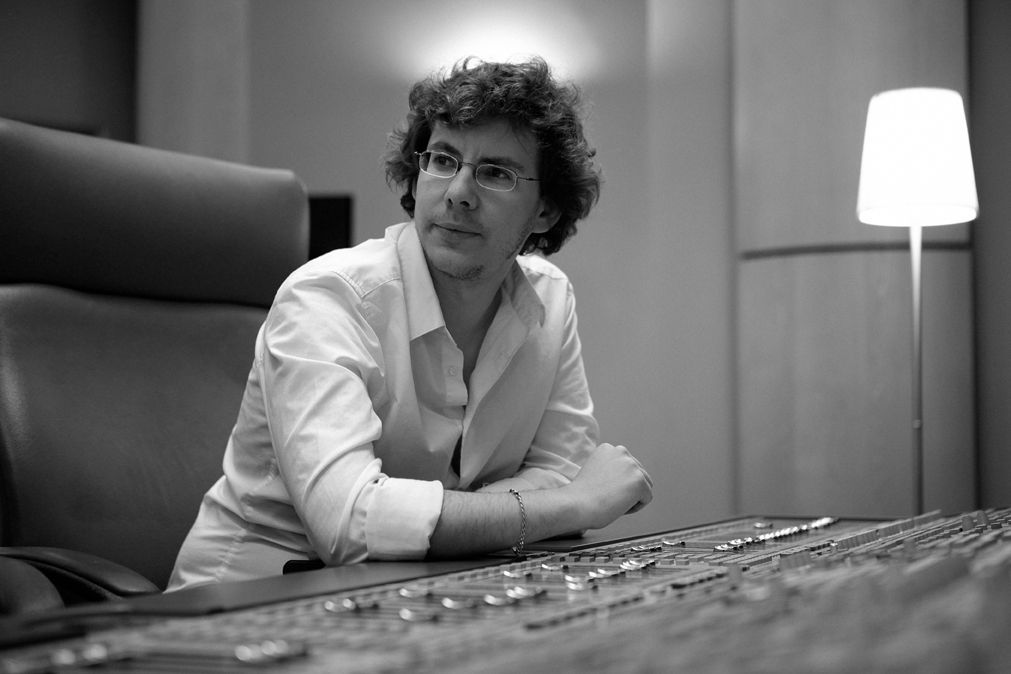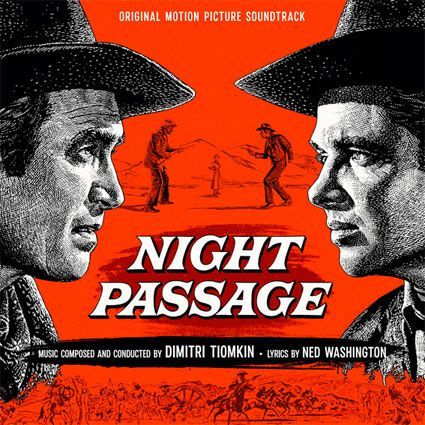Raintree County

Film and TV Music: Vol.XVII / No.1 / Fall and Winter 1957-58 / pp. 3-12
Publisher: National Film Music Council © 1958 All rights reserved
The composition of the dramatic music score for any “epic” motion picture presents many rough and special problems. Not the least of these is sheer length. A motion picture that is to run in excess of three hours will, the chances are, require a dramatic score of approximately ninety minutes. Some such films will, of course, call for less music; and there will be those, like RAINTREE COUNTY, that demand more. So many notes constitute, to say the least, a large composition chore, even without the stop watch. In the confines of a celluloid straitjacket the task is truly mountainous. Somehow, even with the best advance planning, schedules never seem to come off quite as promised, and inevitably there is that awful pressure on the composer to produce, in a given time unit, what should take, say, twice as much time for a composer blessed with even the greatest facility. RAINTREE COUNTY was no exception; towards the end of the composition period the boom fell and the panic was on. We’ll come back to this later.
The novel by Ross Lockridge, Jr., from which the screen play was taken, was by no means a straight line story. Though effective and moving, it was diffuse and involved. Its emotional complexities, its criss-crossing tensions and surges, its heterogeneous flashbacks demanded of the reader the greatest possible concentration. One found oneself time and again turning back to refresh memory and re-establish contact. These problems had to be faced by Millard Kaufman in constructing his screen play and by Edward Dmytryk in interpreting the development of the story and the characters on the screen. Despite their great skill, vestiges of the diffuseness and involvement of the original came through on the screen to some extent and presented serious problems to the composer.
My first decision had to do with general approach. The time: mid nineteenth century. The place: a fictional and prosperous county in Indiana just preceding, during and immediately following the Civil War. The atmosphere: the fantasy of the Legend of the Raintree (symbolizing Man’s endless quest for the unattainable) superimposed, in not too clear-cut a fashion, on a most realistic and practical set of situations. What should be the style, what should be the content of the music? Because of the overtones of the struggle between the North and the South, would there be the inevitable juxtaposition of “The Battle Hymn of the Republic” against “Dixie”? Should, indeed, the score be based on indigenous music of the period? Should the music have the “modern sound” and if so, to what extent? Should block color or should melody be the predominant characteristic? I even considered the possibility of a totally source music score, meaning that all the music would come from a source within the action, either seen on the screen or implied.
Almost immediately I ruled out source music in favour of a completely theatrical approach. Next, I vowed that there would be no “Battle Hymn-Dixie” goings-on and that the thematic material would be original (to the degree that this is possible) with me. I then determined that the score should be romantic in feeling, that it would be melodic and that it should have what we know as “that modern western sound”, not “Wagon Wheels” of course, but rather the pentatonic and, to some degree, polytriadic sound that, under the able aegis of certain composers, too well known to require mention, has become the trade mark of the open spaces in recent serious American music. Next, came a practical and perplexing problem. Should there be a song? The current vogue in so-called title songs has become a bugaboo to all of us who work in films. That it has been overworked to a fare-thee-well there is no doubt. That a smash hit title song ranks high among the top exploitation and promotion media that a movie can have is also an established fact. That RAINTREE COUNTY represented a cost of over five and a half million dollars was already common knowledge when I approached my job. Could I, in good composer’s conscience, accede to the pressure for a title song? I decided that I could. Hence, ‘The Song of RAINTREE COUNTY’ with lyrics by Paul Francis Webster.
My attempt was to write a melody, with a certain folk feeling, which would serve well as the thematic representation of Raintree County itself, of a locale and its people, have popular appeal as a song and yet dovetail with the color and style of the total score. Webster’s problem lyrically was to use the words, RAINTREE COUNTY within the title, to create a lyric that would be comprehensible in today’s incomprehensible popular song market, to maintain some definite relationship between the words of the song and at least the feeling, if not the story, of the picture, to be commercial and yet be literate enough to “belong” in the company of the rest of the elements of the film. Space does not permit a reprint of Webster’s entire lyric which fulfills all of the many requirements impressively. However, the essence of it, and indeed of the picture, is epitomized in his closing three lines:
FOR THE BRAVE WHO DARE
THERE’S A RAINTREE EVERYWHERE…
WE WHO DREAMED FOUND IT SO
LONG AGO.
© Robbins Music Corp.
The developmental treatment of ‘The Song of RAINTREE COUNTY’ is free. Though it occurs often in virtually its basic song form, it frequently appears in other guises. For instance, early in the picture, when Johnny (Montgomery Clift) goes on his futile quest for the Raintree through the big swamp, the melody appears as part of a two part invention. There is a great deal of linear writing in the score, and the fugato treatment of Susanna’s (Elizabeth Taylor) Mad Theme occurs somewhat later.
Now, what to do about the diffuseness, the multiple lines, and the crisscrossing emotional conflicts? Decision: straightforward leitmotif. A theme or motif for every important character (or combination of characters), locale, emotional element. Result: thirteen thematic entities with specific story identifiability (there are additional transitional and independent motifs, of course). Thus I hoped to provide certain clarifying “islands” or “audio-reminders” that would help the audience, if only subconsciously, to orient individual events and character relationships to the whole.
Another “perplexer” to be resolved before actual writing could begin. How would ‘The Song of RAINTREE COUNTY’ be presented? The exploitational and promotional ramifications had to be considered, while still maintaining proper loyalty to the artistic integrities of the film. A hit commercial phonograph record is the sine qua non important “exposure” for the title of the picture, via a song. Result: vocal presentation in the Main Title by our fine studio chorus or a non-name soloist – OUT. Engage a top name vocalist and make a tie-in deal with his phonograph record company. Result: Nat King Cole and Capitol Records. The original plan was to have Cole sing at both the beginning and the end of the film. When we put it all together, however, we found that the introduction of Cole’s solo voice into the final scene of the picture did violate dramatic integrity. Therefore, the reprise of the song at the “finale” is presented by the chorus.*
On scene, the “Perfesser” refers to the “GOLDEN RAINTREE”, the enormous tree from the Orient, planted by legendary Johnny Appleseed. Its petals of gold, glistening in the sunlight, shower down upon the earth. An orchestral gimmick or shimmer of some kind for the Golden Raintree would be in order. Result: what appears on a percussion line in the orchestral scores as the “RAINTREE JIMJIK.” This is the curious sound of descending or cascading and not-quite bells heard throughout the score in one particular bar in ‘The Song of RAINTREE COUNTY’. I hoped that the sound would be intriguing and might evoke questions as to how it was made. Many have asked and here is the answer. A good toy glockenspiel (the kind with the brass tubes rather than the flat rectangular bars), scraped from top to bottom by two pairs of brushes (one pair following the other – two percussionists, of course) produced the effect. On the recording stage, to the naked ear, it was virtually inaudible. It achieves the characteristic heard on the sound track via multiple magnification and maximum reverberation (echo chamber). The word, JIMJIK, the equivalent of “thing-a-ma-bob”, was merely an identifying handle for the effect. The exact method of producing it, known to me when I first conceived and indicated it on paper, was later worked out by trial and error on the recording stage.
The RAINTREE JIMJIK, wherever it occurs, was recorded with earphones against the previously recorded orchestral track. It was, therefore, on a separate film strip (or channel) and could be handled completely independently in rerecording (dubbing). Were this score ever to find its way to the concert stage, it would be necessary to have the JIMJIK on a phonograph disc or tape in the manner of the birdcalls in THE PINES OF ROME (with apologies to Respighi).
There was the question of the principal orchestral voice or color of ‘The Song of RAINTREE COUNTY’. My selection of the harmonica was arbitrary and subjective. I did no research in an effort to determine that the harmonica was a popular instrument in Indiana in 1860. It merely felt right to me as the musical voice of Raintree County. The superb playing heard on the RAINTREE tracks is by George Fields. The harmonica was recorded simultaneously with the rest of the orchestra. However, it was not only on a separate microphone, but also on a separate film strip (channel). Such “separation” from the rest of the orchestra as we have was achieved by the physical placement of the harmonica on the recording stage and by the dynamics within the orchestra itself.
The very rhythmic subject allocated to the character of Flash Perkins (Lee Marvin), Raintree County’s “rough diamond”, speaks principally through the voice of the banjo. Again the choice was the result purely of what I heard in my own mind’s ear as I studied Flash’s character on the screen. At our recording sessions the banjo was placed in the woodwind section (because its line was frequently doubled with two low clarinets in unison) and physical proximity was prerequisite for neat rhythmic ensemble. However, the banjo was closely miked and on a separate film strip. We were lucky with the problem of separation because of the percussive characteristic of the banjo itself and also because of our alert and talented recordist, Fred MacAlpin.
Susanna Drake (Elizabeth Taylor), one of the two leading feminine characters in the story is a pathetically neurotic figure. She is, so we ultimately learn, actually psychotic – quite paranoid – and is the victim of fear and shame that she is part negro. She suffers also from the pain of guilt for what she believes to have been her part in the responsibility for the possible murder of her father and the dark skinned Cuban lady, Henrietta, (whom we never meet on screen, she having died before our story opens). Susanna is neurotically devoted to the memory of Henrietta, by whom she was virtually raised (her own mother having suffered from a progressive mental illness). This emotion gives rise to the Lament for Henrietta (a mutation of the Mad Theme, described presently) which we hear first when Susanna, with her new husband, Johnny, visits her family’s burial plot on their once proud plantation.
Susanna’s malady advances throughout the course of the action. Among the symptoms of her abnormality is her passion for a large number of boudoir dolls which she takes with her wherever she goes. It was inevitable that there would be a musical identity for Susanna’s illness. Again, a composer’s vow: no vibraphone hazes, no theremin; the onset of dementia to be achieved through some hopefully newer sounds. In discussions of mental aberration there is frequent reference to the victim’s constant awareness of some sort of sound which does not actually exist (Robert Schumann’s incessant A, for example). Happily having no empirical knowledge of such sounds, I freely devised one for Susanna. “Little bells” are what she hears. The effect was achieved by two pairs of Greek, or finger, cymbals struck simultaneously and very closely miked.
Susanna’s Mad Theme is divided into two subjects. The first represents her over-all “bad feeling” or dementia. The second is the triplet subject specifically associated with the dolls and particularly with her favorite doll, Jeemie, after whom she names her son. Both subjects are heard for the first time on Susanna and Johnny’s wedding night as they travel down the Mississippi on a river boat towards her New Orleans home.
The doll motif, recorded as a separate entity, was composed and orchestrally arranged in such a manner as to be played against the basic Mad Theme during the re-recording or dubbing process. In other words, that which emerges on the sound track as a single piece of contrapuntal music, was never played as such on the recording stage. The arithmetical niceties of timing, meter and the like are sufficiently intricate to form the basis for a separate article.
Following an hysterical outburst of self condemnation in which Susanna begs Johnny to beat her, he suggests that maybe a good start towards lifting the anxieties which plague her would be to get rid of the “damn dolls”. Grasping at any straw, Susanna enthusiastically agrees. The two of them sail into an orgy of doll destruction, hurling the “creatures” against the wall. This is accompanied by a variation on the Mad Theme – “in the manner of a sick waltz”, according to the direction in the score. The treatment, both rhythmically and harmonically constitutes something of a departure from the surrounding style. However, it seemed the most effective way in which to speak musically the neurotic delight with which Susanna enters into the futile gesture.
The relationship between Susanna and her husband, Johnny, is most complicated. In fact, it is schizoid. They are either the most ecstatically and idyllically in-love couple imaginable or the most completely frustrated duo in the history of storied romance. I found it impossible to express this relationship musically in terms of one thematic entity treated in two different ways. Therefore, there are two themes for Susanna and Johnny’s peculiar alliance: the Happy Love Theme and the Melancholy Love Theme. The first, which is an almost completely diatonic melody, with the simplest of harmony and an orthodox bass line, is in the manner of a love song. Though it was conceived as an instrumental theme and is never sung in the film score, it has been made, apart from the picture, into the published song NEVER TILL NOW (lyrics by Paul Francis Webster), of which there are several commercial phonograph recordings. The second or melancholy side of the Susanna-Johnny love is spoken by a more chromatic and harmonically more complicated melody which reaches its climactic statement in a forte full string and horn unison when Susanna’s body is found in the Raintree Swamp following her suicide.
There are separate themes for the relationship between Johnny and his school days sweetheart, Nell (Eva Marie Saint), for little Jeemie Shawnessy (son of Susanna and Johnny), and for the Raintree Swamp. There are two additional short motifs which occur and recur with the interplaying anxieties of both Johnny and Susanna, as each realizes that their life together is to be fraught with the inevitable tensions of a union in which one of the partners is mentally unstable and the other is frustrated, fated never to attain fully the goals for which his talents and character had seemingly fitted him. There are two Battle Motifs which underlie the scenes involving Johnny and Flash as soldiers in the Union Army during the Georgia Campaign. All of this thematic material, arranged for piano, is included in a published folio entitled THE MUSIC OF RAINTREE COUNTY.
Earlier I referred to the exigencies of schedule and the “lowering of the boom”. An orchestrator by profession, I compose my motion picture dramatic music in detailed, seven line orchestral sketches. Why not, then, go the rest of the way and work in full score? Because, regrettably, even before the panic sets in, there just isn’t enough time under the scheduling system that still prevails. The small time spread between even the most detailed sketches and full score provides the differential between “making the date” and not making it. There is no orchestration credit on RAINTREE COUNTY because the overwhelmingly major portion of the score was committed to paper in my own fully detailed, seven line sketches. When, however, towards the end of the composition period, my remaining time was suddenly cut in less than half, a group of talented, generous and good friends rallied round to make the impossible recording date possible. After meticulous projection room discussion and sessions at the piano with me, Alexander Courage, Sidney Cutner, Robert Franklyn, Conrad Salinger and Albert Sendrey each adapted and arranged my detailed thematic material for certain scenes. Sendrey, Franklyn, Albert Woodbury and Arthur Morton all did sections of orchestration.
Any discussion of the music score of RAINTREE COUNTY would be incomplete without enthusiastic thanks to the artist who was at the electronic controls during the re-recording process, William Steinkamp. It is his masterful combining of all the sound elements of the picture that brings the music in its completed state to the sound track.
How much Producer-Director help or supervision (what we musicians are occasionally too inclined to call “interference”) is a composer apt to get in creating a score of the proportions of the work we are discussing here? RAINTREE COUNTY, it is pretty generally known, was created in a somewhat hectic atmosphere. As a result, by the time I finally began actual composition of the score, I had had a minimum of contact with the producer and director “of record”. During the actual scoring period they were not, shall we say, “on call”. However, I did have the distinct benefit of detailed consultation with two of the canniest and most knowledgeable of film minds, I am much indebted for their guidance and advice, for the privilege of sharing their “motion picture sense”. One is the distinguished director-producer-executive Sidney Franklin (“The Good Earth”, “Mrs. Miniver”, “Random Harvest”, “Waterloo Bridge”); the other, the Supervising Editor of MGM and perhaps the dean of motion picture editors, Miss Margaret Booth. If the score is a helpful adjunct to the emotional and dramatic impact of “RAINTREE COUNTY” I must share the credit with Mr. Franklin and Miss Booth.
The phonograph LP of the RAINTREE COUNTY score occupies four twelve inch sides and runs 84 minutes and 55 seconds. Lately there has been considerable written criticism of sound track LPs on the grounds that while motion picture music may be enormously effective as the accompaniment to dramatic action on the screen, it does not make for good phonograph listening. In an attempt to satisfy the requirements for good listening without benefit of picture, as extensive an editorial job as has ever been attempted went into the preparation of the RAINTREE COUNTY LP. Within the limitations of what was on the picture sound track, the music was edited with only one frame of reference: Does this piece have anything resembling good musical form, and if not are there any editorial procedures by which it can be achieved? Whole sections of bars are transplanted from where they occur in the picture track to a position in which they make for better musical form and sequence. It was not merely a process of cutting out obvious stalls and omitting sections. Within individual sequences, the material was actually “recomposed on track” to produce the optimum in “listening music” consistent with what had been originally recorded for the picture. The extent to which we succeeded is for the listener to decide, but it is germane to this discussion to set down that we did try.
There are over two hours of music in RAINTREE COUNTY. It was a difficult job, but then what motion picture scoring job isn’t? Per my discussion of the score in the program notes of the LP, ‘RAINTREE’ was a challenge – a big one. Meeting it was fascinating, perhaps the most absorbing job I’ve ever tackled.
RECORDS
The Song of RAINTREE COUNTY: Nat King Cole with J. Green and the MGM Studio Orchestra; Capitol F-3782.
Johnny Green and the MGM Studio Symphony Orchestra; MGM K-12538.
Walter Scharf and His Orchestra; Jubilee 45-5300.
Never Till Now: Mario Lanza with George Stoll and his Orchestra (Recorded in Italy); RCA-Victor 20/47-7119
Percy Faith and his Orchestra and Chorus; Columbia 4-41024.
Gordon MacRae with Van Alexander and his Orchestra; Capitol F-3816.
Joni James with orchestra and chorus; MGM K-12565.
Danny Kellarney with Dom Frontiere and his Orchestra and Chorus; Fraternity F-785.
Kirk Stuart with Waller Scharf and his Orchestra; Jubilee 45-5304.
Original Sound Track LPs:
Johnny Green conducting the MGM Symphony Orchestra and Chorus; RCA-Victor LOC 6000.
Johnny Green conducting the MGM Symphony Orchestra and Chorus; RCA-Victor LOC 1038 (Highlights).
* In the LPs on RCA Victor Nat Cole’s voice does not appear at all because of his exclusive contractual tie-up with Capitol. The MGM Studio Mixed Chorus sings on the LPs in place of Cole.



